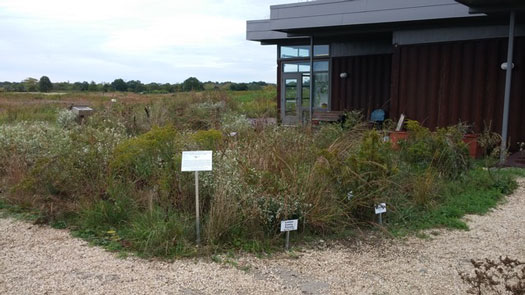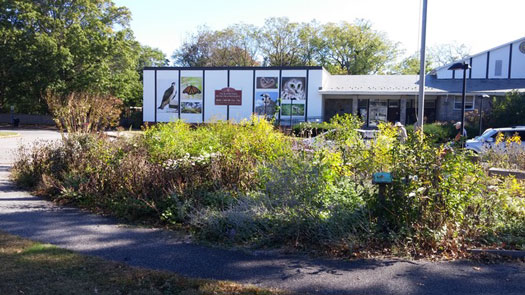The Gardens of South Shore Audubon
The South Shore Audubon Society is committed to transforming our communities into places where birds flourish. Our communities can provide important habitat for native birds. In turn, birds offer us a richer, more beautiful, and fulfilling place to live.
Planting native plants is an essential part of establishing Bird-Friendly Communities. Native wildlife needs native plants to thrive and survive. By choosing native plants for our yards and public spaces, we can restore vital habitat for birds in our communities and help them survive in face of habitat loss from development and climate change.
South Shore Audubon is developing a variety of sites with native plants.
Tackapausha Museum in Seaford
The Garden in front of the Tackapausha Museum in Seaford, 2225 Washington Avenue, is open all daylight hours. It is available for all to enjoy, and to inspire the community to add native plants to home gardens. Native flowering plants of Long Island are showcased in the garden. Information on these plants and their care is available in the museum and on this website. Growing native plants attracts and sustains birds while making home gardens beautiful, easy to care for, and better for the environment.
Volunteers to help maintain and further develop the garden are welcome. The garden was funded by a grant from the National Audubon Society.
The Michael Sperling Bird Sanctuary
The Michael Sperling Bird Sanctuary is a nature refuge in a Nassau County stormwater storage and recharge basin (sump) located on North Pine Street and Wood Avenue in Massapequa; for more information, visit Michael Sperling Bird Sanctuary.
Hempstead Plains Preserve
The South Shore Audubon Society has also established a native plant garden in front of the Education and Research Center of the Hempstead Plains Preserve, which is located on the campus of Nassau Community College.
Before Long Island was converted to farmland, its central portion had porous, sandy soil, which made for relatively dry conditions. The soil could not support trees and other plants that require moist conditions, but grasses and sedges flourished there. The Garden at the Hempstead Plains showcases indigenous prairie species. Not only are some of the plants quite beautiful, but they grow very well in our area. Species descriptions may be found here.
The Garden brings together native Long Island prairie species in an accessible area, so visitors can see them at close hand and see what they look like at different times of the year. The best time to see them is in the summer and fall, but a trip to the Plains at any time of the year is a wonderful experience.
The garden was created with funds from a grant from the Susan and Coleman Burke Foundation to the National Audubon Society. Directions to the Plains and its hours may be found on their website.


